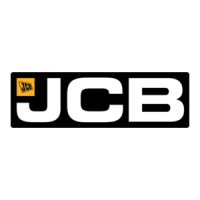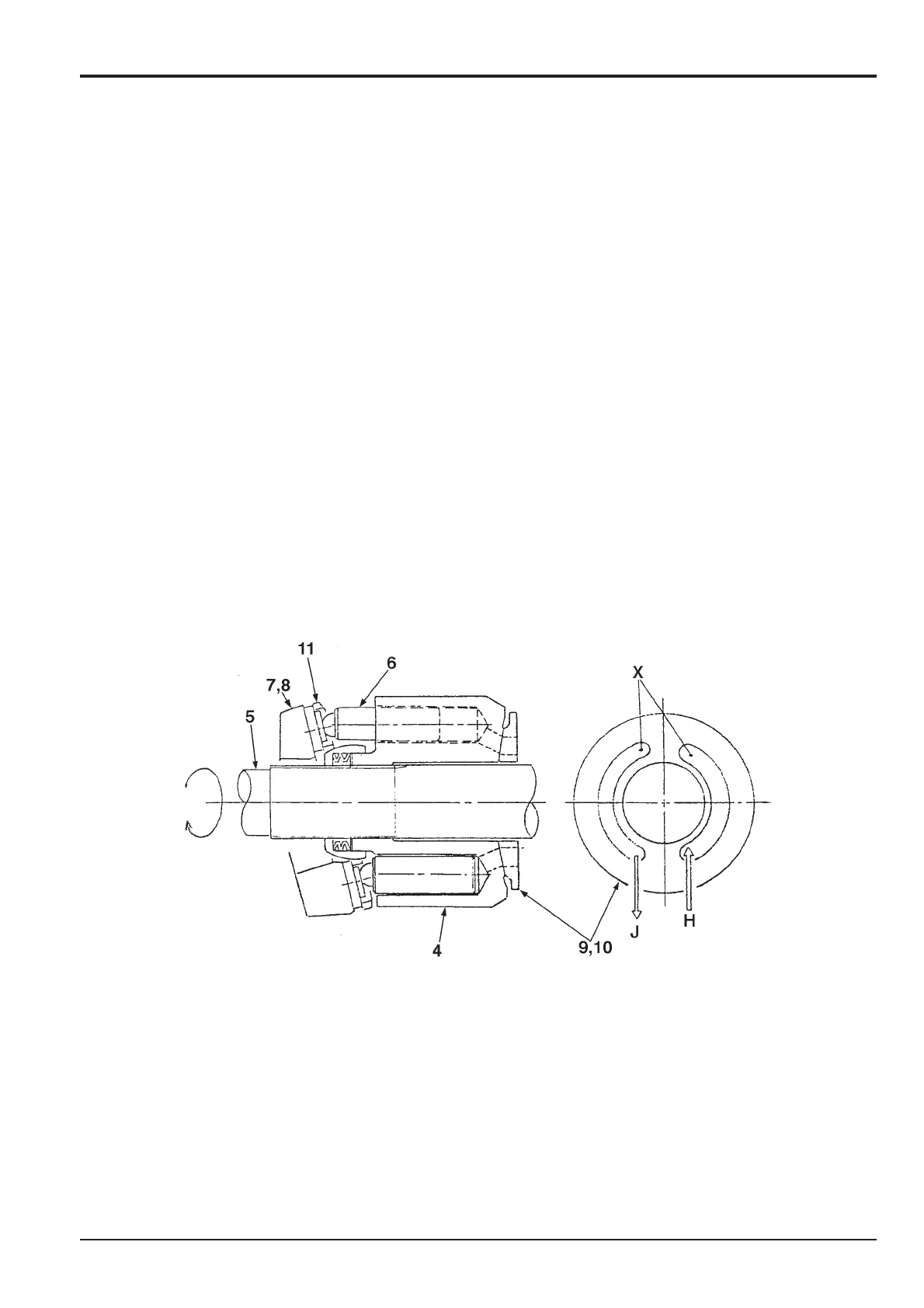10 - 3
Operation
In the following descriptions the bold figures (e.g. 4) relate to
the items on the sectional and exploded views on pages
14 - 1 to 14 - 3 and the component list on page 14 - 4.
Main Pumps (P1 and P2)
Each pump consists of a cylinder block 4, containing nine
piston/shoe assemblies 6. Driven by shaft 5, the block
rotates between a variable angle, non-rotating swash plate
(7 on P1, 8 on P2) and a fixed valve plate (9 on P1, 10 on
P2).
Retainer plate 11 holds the piston shoes against the swash
plate. Due to the angle of the swash plate, as the cylinder
block rotates the pistons are forced to move back and forth
in their cylinders. The piston stroke, and therefore the pump
displacement, varies according to the swash plate angle,
which is controlled by machine demand.
The fixed valve plate 9 contains two crescent shaped ports
X. The valve plate is located so that when a piston reaches
its nearest point to the plate it comes into line with the pump
inlet port H. During the next 180° of cylinder block rotation
the piston draws oil into the cylinder bore. When the piston
reaches its furthest point from the plate it ceases to be in
line with the inlet port and comes into line with pump outlet
port J. The next 180° of cylinder block rotation causes the
piston to force oil from the cylinder bore through the outlet
port.
The process is carried out sequentially by the nine pistons to
provide a continuous smooth pump output.
Section E Hydraulics
9803/6410
Section E
10 - 3
Issue 1
Hydraulic Pump/Regulator
JS00060

